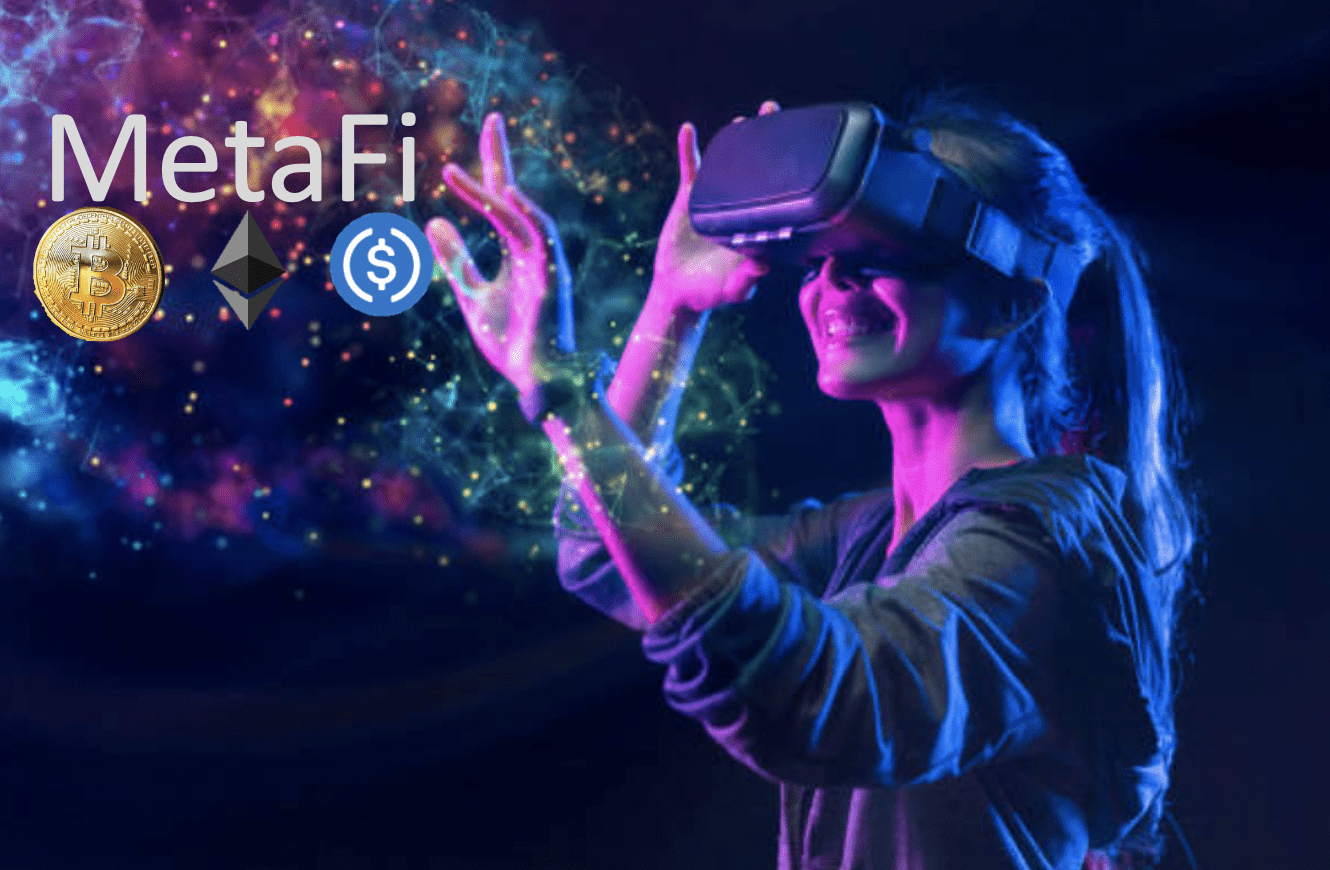MetaFi – Defining DeFi for the Metaverse
We take a comprehensive overview of what is defined as “MetaFi”
- What is MetaFi
- MetaFi’s relevance in the blockchain space
- Core principles of Defi that make MetaFi possible
- Key trends accelerating adoption of MetaFi
- Opportunities and features
- Whats next for MetaFi
What is MetaFi?
MetaFi is an expansive term that refers to protocols, products, and/or services that enable the complex financial interaction between non-fungible and fungible tokens (and their derivatives).
For example today, with MetaFi an individual could use a fraction of an NFT as collateral in a DeFi lending platform. To understand MetaFi, we must first understand the core principles of Defi that make MetaFi possible.
Core principles of Defi:
- Open, an open, transparent, borderless financial system
- Composable, acting as building blocks for developers, which in turn forms an innovative parallel financial system
- Decentralised, developers from all over the world can now freely contribute and compete to offer the best yields while mercilessly cutting waste.
- Unstoppable, free from regulation and jurisdictional barriers. It’s worth noting that regulators can only restrict how fiat-based systems they oversee. They cannot, however, prohibit what takes place in DeFi itself. As long as projects and their teams are sufficiently decentralized. *(known as the onramp/off ramp problem)
MetaFi combines these DeFi principles with the entire Metaverse via a blend of non-fungible and fungible tokens. In addition to new forms of community governance such as Decentralised Autonomous Organisations (DAOs). The integration of these different crypto primitives creates a fully-fledged parallel economy that will bring in the next billion users.
6 key trends accelerating adoption of MetaFi:

1. Financial ecosystem of ecosystems:
Many people scoff at the speculative nature of cryptocurrency, without understanding that this is a feature, not a bug. By leveraging MetaFi technologies, value and its flow may be recorded in digital assets for everything and anything, allowing free marketplaces to develop for a long-tail of value with real-time price discovery, unlocking latent value that has yet to be tapped across the internet.
2. Community of risk:
History has shown that in new, developing markets, incumbent financial institutions frequently fail to evaluate risk; whether it’s basic banking services or insurance. This has resulted in communities pooling their risk in a variety of areas, including farming villages, shipping operations, and previously through cooperatives.
DeFi is already bringing the tools for community-based insurance provision to users, especially when combined with the DAO services stack.
3. Maturing financial toolkits:
Previously, the DeFi stack has been restricted to a specialized group of crypto developers because of its technical intricacy. However, with NFT platforms, creators and communities will be able to much more simply set the economic terms of creative exchange with consumers from perpetual royalties to creating their own social tokens. Fans and communities may also participate in the financial success of their favorite products and cultural endeavors by directly sharing in it.
4. Enhanced governance/DAO services:
The development of a mature DAO stack will allow for the collective governance of purely on-chain digital and financial service delivery, with no need for businesses or centralized intermediaries such as banks. Membership in a DAO is characterized by members’ capacity to join and leave at their discretion and under clearly defined conditions.
5. Gamification of everything:
Generation Z’ers, on the other hand, have shown greater interest in learning more about money. As a result, several neobanks have introduced new innovative ways to manage personal finances, while education platforms provide easy access to finance courses. This makes young people far more willing and able to interact with financial services than their parents and grandparents were when they Furthermore, we see that the distinction between memes and financial instruments is being increasingly erased, such as in Dogecoin or other “meme stocks” accessible via Robinhood, where individuals are comfortable investing in culture.
6. Virtual becomes the physical
The cross-chain interoperability of the virtual economy will be facilitated through a new decentralized entity of the Metaverse, which may be seen as an interface layer between the physical and digital realms made up of hardware and software advancements, but most significantly, an economic system that parallels conventional currency. In that context, it’s critical that we think about it in terms of physical value and virtual value.
Next up in the MetaFi series we will explore the following:

